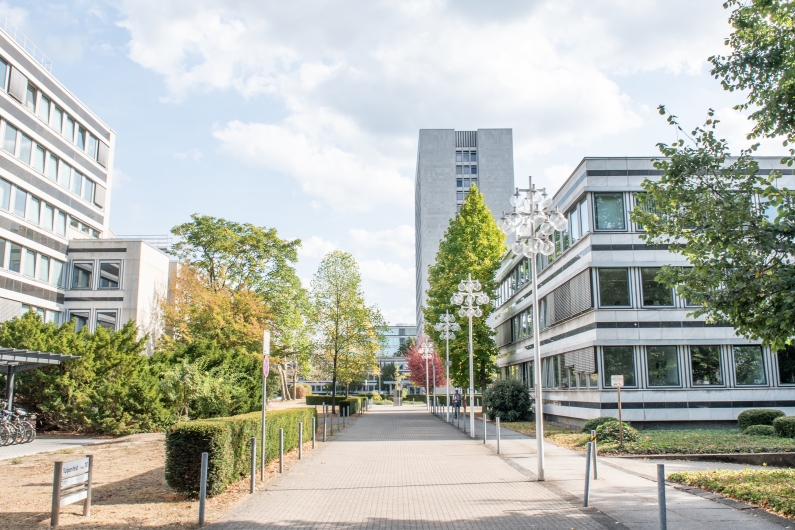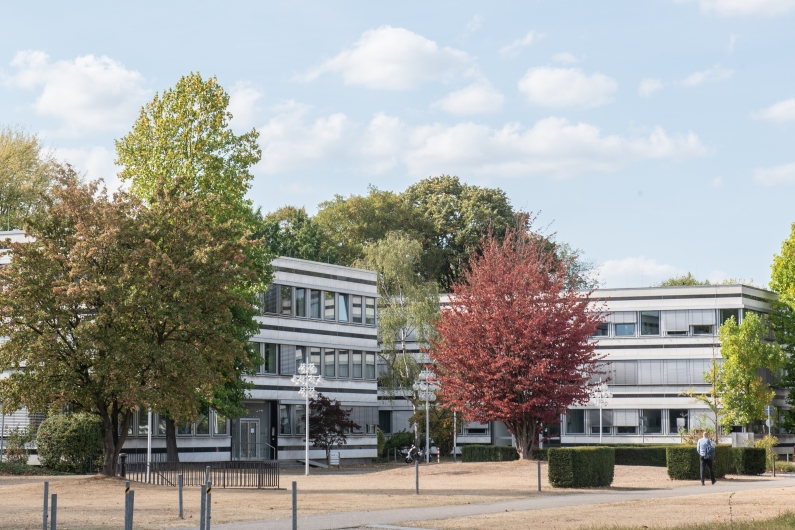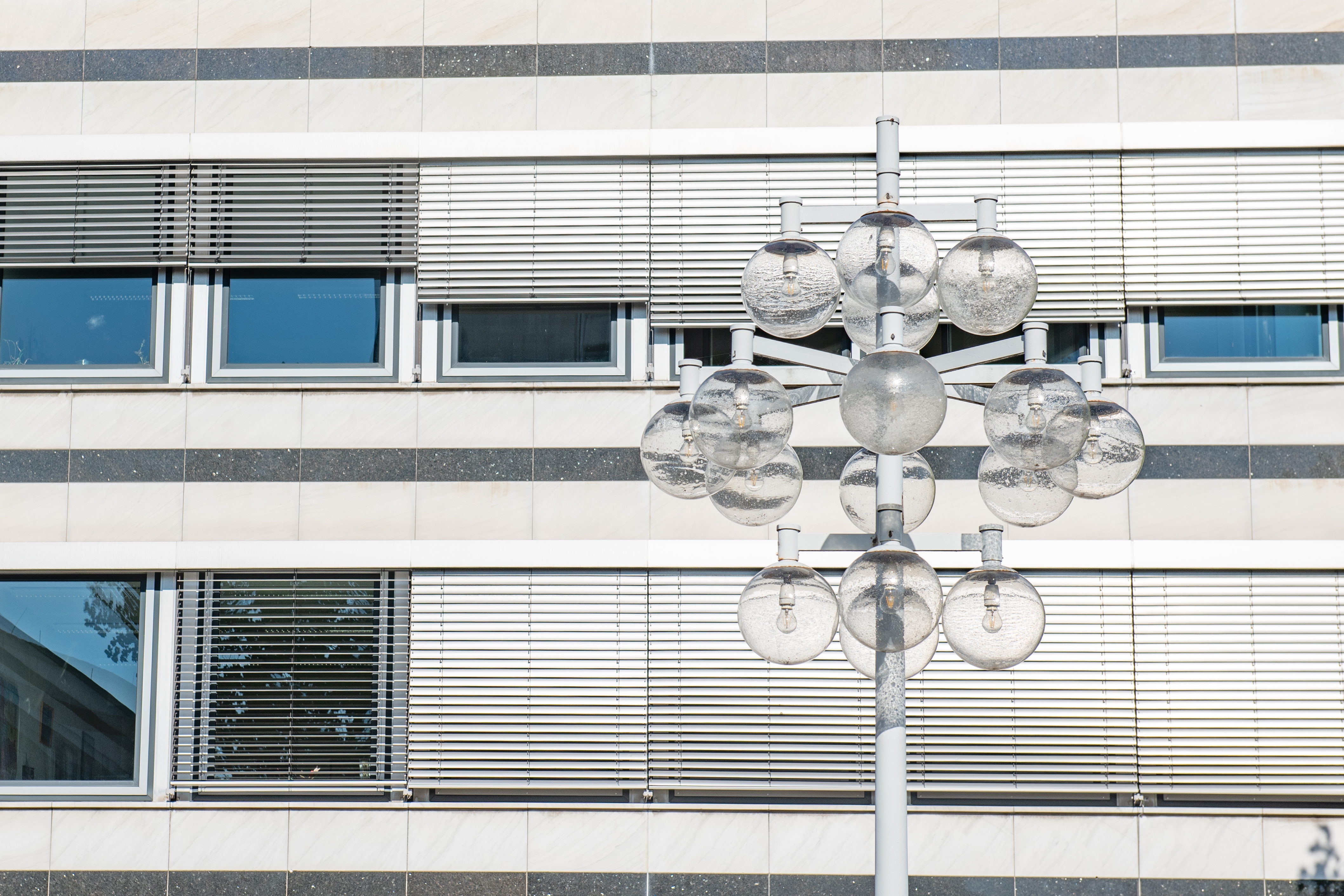The Tulpenfeld office complex consists of an 18 storey high rise, a hotel, three free-standing atrium buildings and two other office buildings, 2018.
Stiftung Haus der Geschichte/Benjamin Westhoff
Since the early 1990s, the Bundeskunsthalle and Kunstmuseum Bonn have been located across the way from the Tulpenfeld office complex, 1999.
Rheinisches Amt für Denkmalpflege
The Tulpenfeld office complex can be reached via a street leading from Heussallee, and via another that begins at the corner of Winston-Churchill-Straße and Heinrich-Brüning-Straße, 2018.
Stiftung Haus der Geschichte/Benjamin Westhoff
The Tulpenfeld atrium buildings owe their name to their interior courtyards, 2018.
Stiftung Haus der Geschichte/Benjamin Westhoff
The striking street lights are scattered all over the facility’s entire campus, 2018.
Stiftung Haus der Geschichte/Benjamin Westhoff


